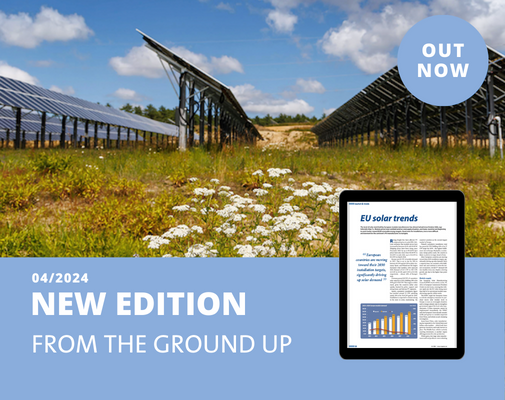Top News
Queensland locks 80% renewable energy by 2035 target into law
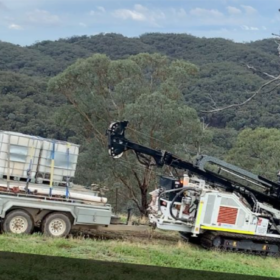
Acen pushes ahead with 9.6 GWh pumped hydro project in NSW central west
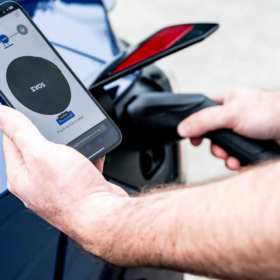
Evos system designed to accelerate workplace EV transition
pv magazine Webinar
pv magazine Webinar
MEDIA KIT 2024
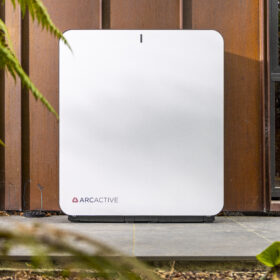
ArcActive targets Australia with ‘re-engineered’ lead-acid battery tech
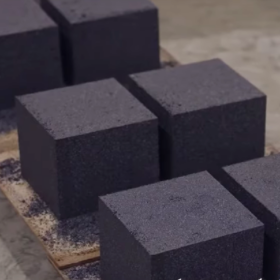
Full steam ahead for industrial decarbonisation solution
Pure Hydrogen secures land to launch ‘hydrogen highway’
System design for PV-driven hybrid EV charging stations
Solar SunShot’s local manufacturing boost timed well for exports to Asia
Press Releases
Trina Solar and PetroGreen partner to accelerate Philippine solar adoption with 117 MW supply agreement
Australian crisis support centre conserves critical resources with help from Maxeon
Macquarie Green Energy and Climate Opportunities Fund acquires portfolio of six investments
Australia and Singapore partner in $20 million initiative to reduce maritime emissions
Opinion & Analysis
Featured
Albanese’s green industries bet: boost for our regions?
Future Made in Australia Act – A positive direction that would benefit from cooperative partnerships
The broad contours of the federal government’s plan to introduce a Future Made in Australia Act foreshadow several positive directions. But the approach also holds clear risks and unanswered questions which will need to be addressed as the plan is fleshed out,
Australian solar evades clouds to perform in March
Solcast, a DNV company, reports that Victoria, Tasmania, Western Australia, and New South Wales were over-performing solar regions in March. This overperformance in the southeast and southwest came despite most of the Australian continent seeing below-average irradiance, due to thicker-than-usual clouds over the sparsely-populated interior and tropics.
Billion-dollar investment could revive Australian solar manufacturing
Solar SunShot is well named. The Australian government has announced it will plough $1 billion into bringing back solar manufacturing to Australia, boosting energy security, swapping coal and gas jobs for those in the solar industry, and guarding against supply chain shocks and geopolitical tension.
More coal subsidies to extend Eraring’s life ‘unjustifiable’
Electricity gen-tailer Origin Energy is currently in talks with the New South Wales government to extend the life of Australia’s biggest coal power clunker, the hyper-expensive, high-emissions, end-of-life 2.88 GW Eraring plant, beyond its slated closure date of August 2025. The reason cited for extension is to maintain reliable and secure energy supply in our state.
Battery price war could soon make electric vehicles cheaper
The main cost of an electric vehicle is its battery. The high cost of energy-dense batteries has meant EVs have long been more expensive than their fossil fuel equivalents. But this could change faster than we thought.
Markets & Policy
Featured
Federal government pumps millions into critical minerals projects
GridBeyond looks to build Australian footprint with new funding
Ireland-headquartered smart energy company GridBeyond plans to expand its operations in “key market” Australia as part of a broader global growth strategy after securing more than $86 million in new funding.
Melbourne City FC kicks renewables goals with Origin partnership
Australian soccer powerhouse Melbourne City FC has teamed with energy major Origin to install a 40 kW rooftop solar system and 13.5 kW battery energy storage system that will help power its newly opened City Football Academy in the Victorian capital.
Community group uses C&I solar profits to provide job opportunities
A volunteer-based community group is using profits generated by commercial and industrial rooftop solar installations to help build a “bridge to the future” as the Illawarra region on the New South Wales south coast transitions its workforce into new employment.
WA to target 2 GWh of dispatchable capacity with first CIS tender
Applications for the first West Australian tender under the Commonwealth government’s recently expanded Capacity Investment Scheme will open mid-year with an initial target of 2 GWh of renewable energy storage projects.
Access applications ‘officially open’ for Central-West Orana REZ
The first access rights for up to 6 GW of new solar, wind and storage capacity in the Central-West Orana Renewable Energy Zone are now on offer as the New South Wales government continues to progress Australia’s first coordinated renewable energy zone to reality.
Installations
Featured
SGC, SMO to deploy 100 MW of solar waste-to-energy in Australia
Winemaker uncorks 5.6 MW solar farm to power NSW vineyard
One of Australia’s biggest privately owned wine manufacturers has launched a 5.6 MW solar farm to help power its operations in the New South Wales Riverina district, with a second utility-scale PV facility in the pipeline.
Rooftop solar on the rise in Australia’s clean energy mix
Combined rooftop solar capacity is now the second largest source of renewable electricity generation in Australia with new analysis showing that PV systems mounted atop the nation’s buildings provided more than 10% of the country’s power supply in 2023.
Queensland commits $2.5 million for solar panel recycling scheme
The Queensland government has committed $2.5 million to progress the development of an “Australian first” solar panel recycling scheme in preparation for the “thousands” of PV panels installed on rooftops and across large-scale solar farms in the state that are approaching end of life.
Report reveals 48.5 GW of untapped PV potential on Australian residential buildings
Australia has firmly established its status as a global leader in residential solar deployment with 35% of all houses having already installed rooftop systems but new data reveals there is almost 50 GW of “untapped PV potential” on residential buildings across the country.
Maxeon unveils TOPCon solar module series for rooftop PV
Maxeon said its new Sunpower Performance 7 panel series features a power conversion efficiency of up to 22.7% and an operating temperature coefficient of -0.29% C.
Technology
Featured
Vast signs key contracts for South Australian concentrated solar plant
CATL unveils first mass-producible battery storage with zero degradation
China-based Contemporary Amperex Technology Co. (CATL) has launched its new TENER energy storage product, which it describes as the world’s first mass-producible 6.25 MWh storage system, with zero degradation in the first five years of use.
Endeavour goes live with community battery on NSW south coast
Endeavour Energy has activated the first community battery on its network in the New South Wales South Coast as part of a broader program the electricity distributor says will support a higher uptake of renewables and allow more households to access the benefits of rooftop solar.
New report tips 60,000 jobs from Australian solar manufacturing industry
Building a domestic solar panel manufacturing industry based on Australian innovation could generate up to 60,000 jobs and help cement the nation’s future as a renewable energy superpower but access to capital and focused policies are essential if manufacturers are to reach scale where they can be cost competitive internationally.
Powerlink delivers infrastructure to unlock 2 GW REZ
Queensland government-owned network operator Powerlink has completed construction work on the transmission infrastructure that will pave the way for more than 2 GW of renewable energy assets in the state’s southeast to connect to the National Electricity Market.
GenusPlus tapped for Pilbara transmission project
Fortescue has awarded energy infrastructure provider GenusPlus Group two contracts worth a combined $50 million to deliver transmission infrastructure as the mining giant works to decarbonise its iron ore operations in Western Australia.
Manufacturing
Featured
Weekend read: Solar through the looking glass
Australia joins global clean energy race with new subsidy policy
The federal government has unveiled plans for a Future Made in Australia Act, proposing taxpayer-funded incentives to advance renewable energy industries, manufacturing, and infrastructure to stake Australia’s place in the global clean energy race.
S-5! announces new mounting components for rooftop solar
Mounting system provider S-5! is to boost the size of its Australian catalogue with the impending launch of two new mounting components for rooftop PV systems, including a new mount that allows for module level power electronics to be attached directly to solar panel frames.
Construction begins on 380 MW central Queensland solar farm
Construction has officially commenced at Spanish renewable energy developer Acciona Energia’s 380 MW Aldoga Solar Farm being developed near the industrial centre of Gladstone on the central Queensland coast.
Fortescue opens doors on 2 GW electrolyser factory
Fortescue has officially opened its 2 GW hydrogen electrolyser manufacturing facility Gladstone and followed that by confirming plans to establish a 50 MW green hydrogen production plant at the central Queensland coast site.
Solplanet to launch new inverter solution for rooftop insallations
China-headquartered inverter manufacturer Solplanet is continuing to expand its product portfolio in Australia with the impending launch of a new three-phase hybrid inverter series designed for residential and small-scale commercial and industrial applications.
Energy Storage
Featured
Genex backs new takeover bid from Japan’s J-Power
Origin adds more renewables, storage to plug pending coal gap
Australia’s largest energy retailer Origin Energy Limited (Origin) has entered into an agreement with Belgian company Virya Energy to acquire the Yanco Delta renewables project that comprises an 800 MWh battery energy storage system coupled with a 1.5 GW wind farm in southern New South Wales.
Zen announces 1 GW pumped hydro project for NSW coal country
Zen Energy has received a greenlight from New South Wales state-owned corporation WaterNSW to investigate transforming Sydney’s biggest water storage facility into a 1 GW pumped hydro project capable of supplying on-demand power for up to eight hours.
Quinbrook closes first stage of 2 GWh Supernode battery project
Australian-owned renewable energy investor and developer Quinbrook Infrastructure has announced financial close and the start of construction on a 250 MW / 500 MWh battery energy storage system that will form the first stage of a $2.5 billion renewables-powered data storage precinct in Queensland.
Rooftop subsidies and rising costs present roadblocks for large-scale renewables
The head of one of Australia’s largest energy generators, retailers and developers has pointed to rising costs and uncertainty about recovering those costs as the cause of a drop in investment for large-scale renewables that threatens Australia’s clean energy goals.
Traditional land owners push ahead with 3 GW mega project in WA’s Pilbara
A Western Australian Aboriginal corporation’s plan to create one of the country’s largest renewable energy projects has reached a new milestone with the registration of the Indigenous Land Use Agreement for the planned 3 GW project by the National Native Title Tribunal.
